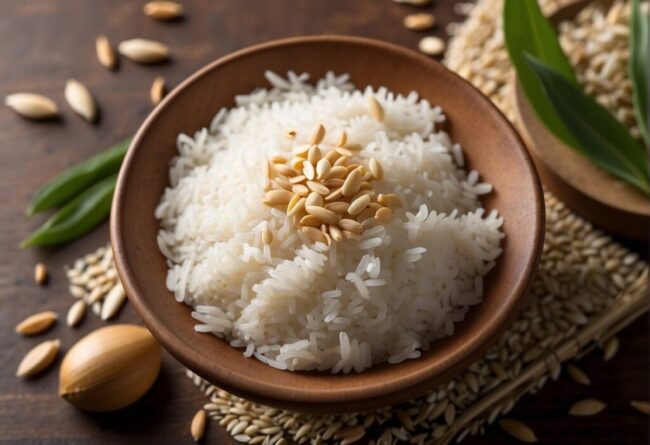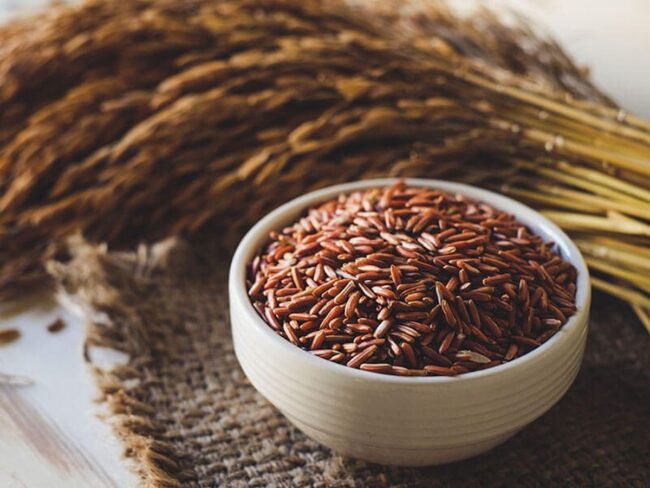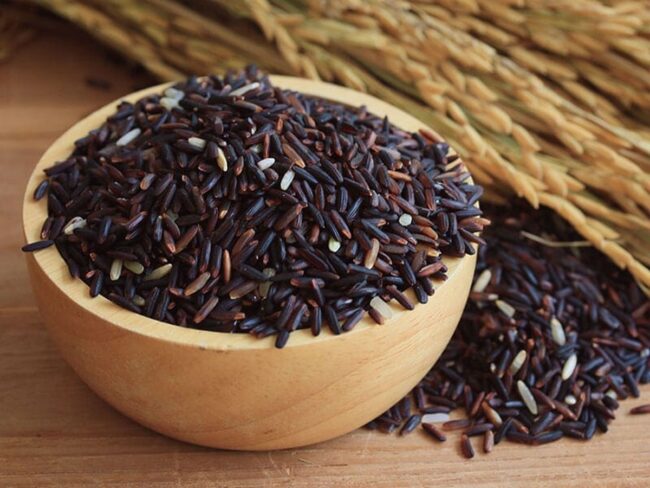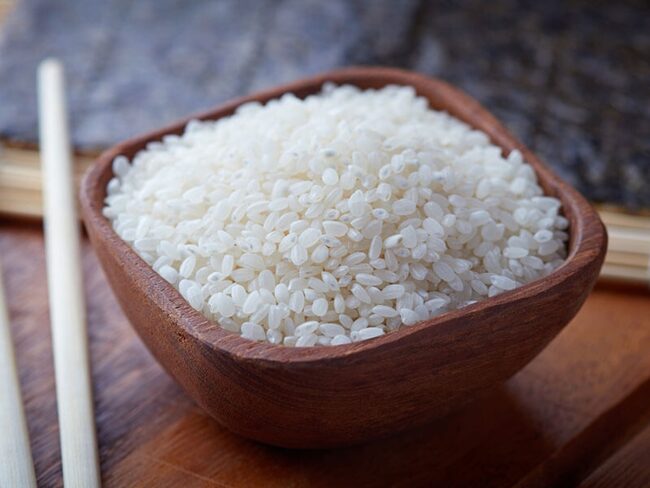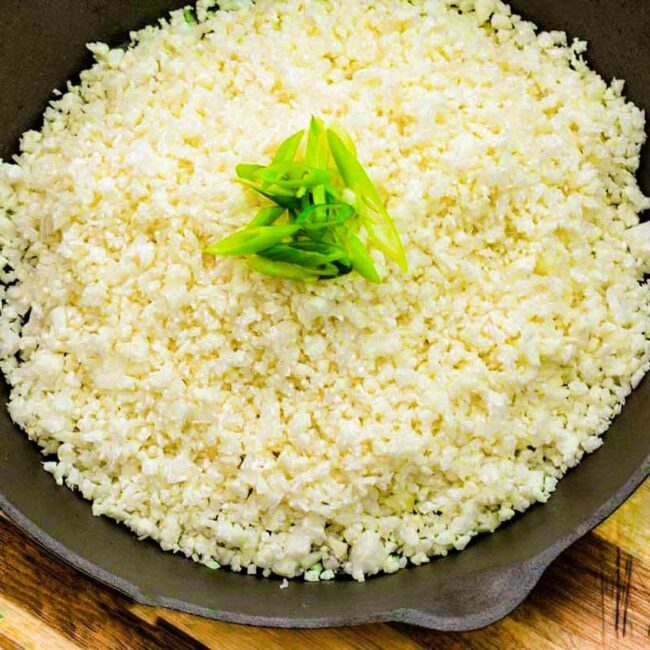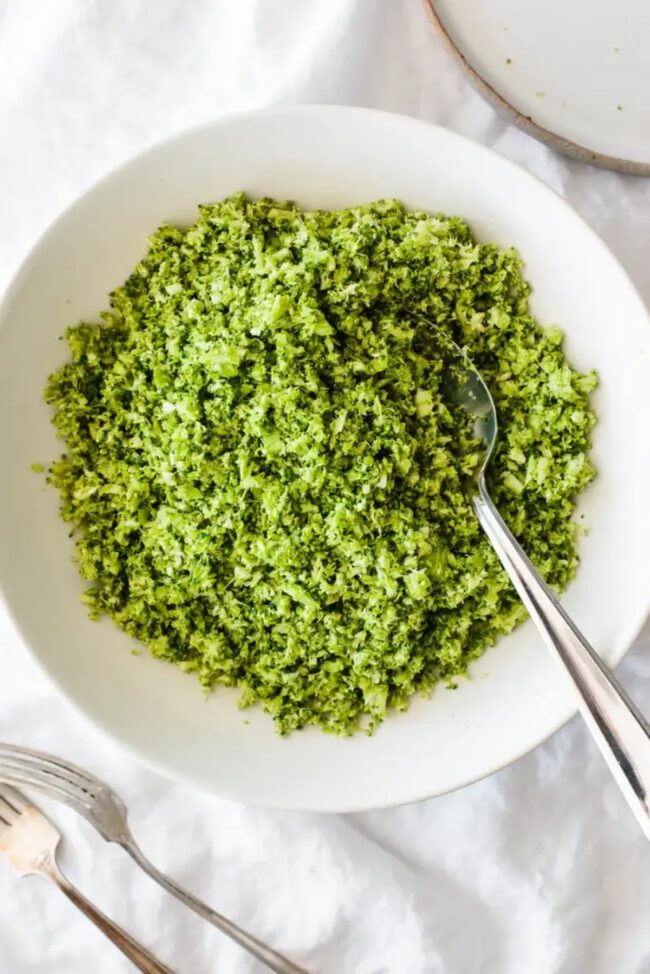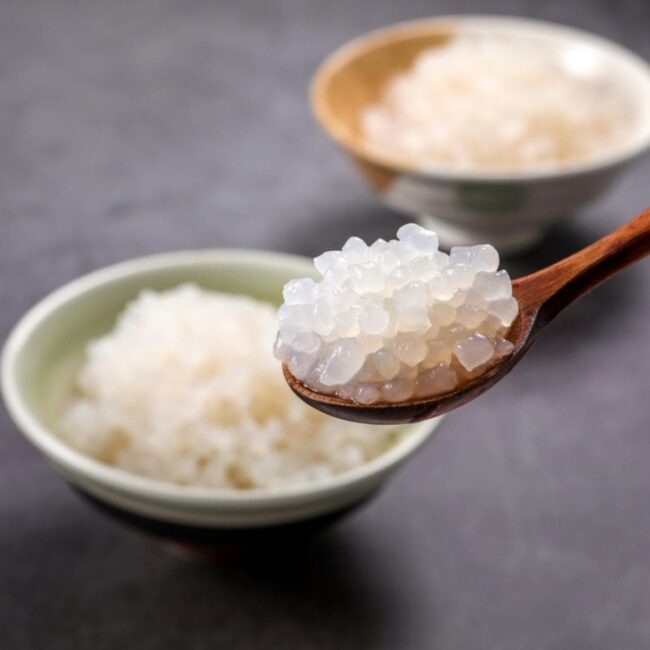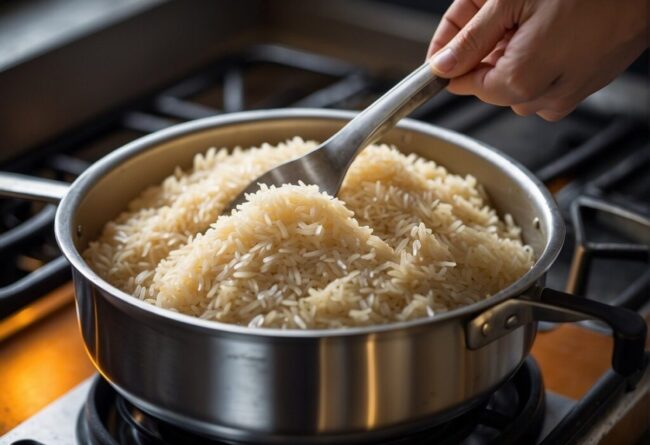15 Tasty & Healthy Substitutes for Jasmine Rice
Jasmine rice substitutes let you explore fragrant grains that echo the soft, floral aroma of jasmine rice.
A blend of long‐grain alternatives fills your plate with a subtle essence reminiscent of exotic kitchens.
Meals carry a gentle balance of scent and taste that transports you to sunlit, faraway fields.
What to Know About Jasmine Rice
Jasmine rice is a fragrant, long-grain rice known for its soft, slightly sticky texture. It is a staple in many Asian cuisines and pairs well with various dishes.
Jasmine Rice Features
Jasmine rice, a beloved staple from Thailand, captivates with its enchanting aroma and taste.
The cooking process reveals a fluffy texture paired with a slight stickiness that complements various cuisines.
Its fragrant notes evoke the essence of jasmine flowers, inviting you to savor every moment at the table.
This rice doesn’t just fill your plate; it elevates meals with its gentle floral flavor that harmonizes beautifully with other ingredients.
Whether served as an accompaniment or featured in stir-fries, jasmine rice brings elegance and simplicity to any dining experience.
Food Nutrition Facts
Jasmine rice serves as a reliable source of energy, rich in carbohydrates that fuel your day.
Each serving offers a balanced mix of nutrients, including protein and fiber, supporting overall health.
This fragrant grain pairs well with various dishes, enhancing flavors and textures.
Its versatility makes jasmine rice suitable for both savory meals and sweet treats alike.
Incorporating it into your diet can add depth to your culinary experiences while providing essential nutrition.
Rice-Based Substitutes of Jasmine Rice
Rice-based substitutes for jasmine rice offer a delightful way to experiment with different textures and flavors in your meals. Below are versatile options to elevate your dishes while still echoing the essence of jasmine rice.
Basmati Rice
Basmati rice offers a delightful aroma that enhances any meal.
Its long grains create a fluffy texture, perfect for soaking up sauces and flavors.
This variety complements many dishes, especially pilafs and curries, elevating the overall dining experience.
Known for its delicate flavor profile, basmati adds an elegant touch to your plate.
Consider incorporating it into your next culinary adventure; you'll appreciate how well it harmonizes with various ingredients.
Brown Rice and Whole-Grain Variants
Switching to brown rice opens up a world of flavor and health benefits.
This whole grain brings a delightful nuttiness that can elevate any dish.
Chewy in texture, it provides a satisfying bite while boosting your fiber intake significantly.
Alternatives like farro or bulgur offer their own unique tastes and textures, making every meal an exciting adventure for your palate.
Choosing these grains not only nourishes the body but also adds variety to everyday cooking routines.
Wild and Black Rice
Wild rice and black rice stand apart with their rich flavors and impressive health benefits.
A protein-rich option, wild rice carries a smoky essence that enhances various dishes.
Black rice shines with its deep color, offering a subtle sweetness along with antioxidants that support overall well-being.
The chewy texture of these grains adds an interesting element to your meals, inviting exploration in the kitchen.
Using them not only elevates your culinary creations but also packs a nutritious punch for you and those at the table.
Short-Grain Varieties
Short-grain rice varieties are essential for achieving the right texture in specific dishes.
Sushi rice, known for its stickiness and compact nature, plays a crucial role in holding sushi rolls together.
Arborio rice offers a creamy consistency perfect for risotto while ensuring that each grain remains slightly firm to the bite.
These rices enhance both flavor and presentation, making meals more enjoyable.
Choosing the right type elevates your culinary creations to new heights, adding an authentic touch to each dish you prepare.
Aromatic Alternatives
Finding the right rice can elevate your meals significantly.
Texmati rice combines Basmati and long-grain varieties, offering a distinct aroma that complements various dishes.
Other aromatic rices also present delightful floral notes, enhancing both flavor and fragrance in your cooking.
A delicate texture accompanies these options, ensuring they pair well with a range of ingredients.
Exploring these alternatives opens doors to new culinary experiences while keeping that enchanting essence you love from jasmine rice.
Non-Rice Alternatives
Jasmine rice is beloved for its fragrant aroma and delicate texture, yet many non-rice grain substitutes offer an exciting twist on classic dishes. These alternatives bring unique flavors and textures that can elevate your meals while providing nutritional variety.
Quinoa
Quinoa stands out as a nutritious seed packed with protein and fiber.
This gluten-free option offers all nine essential amino acids, making it a fantastic choice for those following plant-based diets.
Cooking quinoa is simple; just rinse it to remove any bitterness and simmer for about 15-20 minutes until fluffy.
The texture resembles grains, providing versatility in various dishes from salads to bowls.
Incorporating this superfood into your meals can elevate your nutritional intake effortlessly while satisfying hunger throughout the day.
Couscous Varieties
Couscous serves as a versatile ingredient in many dishes.
This small pasta, crafted from semolina, boasts a quick cooking time of just 5 to 10 minutes.
Its delicate flavor allows it to complement various ingredients seamlessly.
Whether used in salads or as an accompanying side dish, couscous adapts beautifully to different culinary styles.
Seeking something new for your meals?
Consider incorporating this unique pasta into your next recipe for an effortless twist on familiar flavors.
Barley
Barley adds a delightful chewiness that elevates any dish.
Incorporating it into soups or stews introduces a rich depth of flavor while enhancing the overall heartiness of your meal.
This whole grain serves as an impressive source of fiber, contributing to better digestion and lasting satisfaction.
Cooking with barley requires patience due to its longer cooking time, but the robust results are undeniably worth it.
You’ll appreciate how this versatile ingredient transforms ordinary recipes into something truly special.
Farro and Other Ancient Grains
Farro offers a delightful twist on traditional grains with its nutty flavor and chewy texture.
This ancient wheat variety stands out in salads and risotto, adding depth to your meals.
Soaking the grains beforehand enhances their cooking process, leading to perfectly tender results.
Rich in fiber, farro supports digestive health while providing a satisfying bite that elevates any dish.
Consider trying it as a wholesome substitute for jasmine rice; you might just discover your new favorite grain!
Bulgur Wheat
Bulgur wheat serves as a versatile ingredient that elevates dishes with its mild, nutty flavor.
This whole grain cooks in a flash, allowing you to whip up meals without spending hours in the kitchen.
Using bulgur in tabbouleh adds texture and heartiness to this classic salad, making it an appealing option for any occasion.
Beyond salads, consider it as a delightful addition to side dishes or even savory bowls for added nutrition.
With its fiber-rich profile and ease of preparation, bulgur is a smart choice for anyone looking to enjoy wholesome meals without the hassle of lengthy cooking times.
Freekeh
Freekeh stands out as a nutritious whole grain with a delightful nutty flavor that adds depth to any dish.
Its chewy texture provides an interesting contrast in salads and soups, inviting you to experience something new.
Packed with fiber, this grain supports digestive health while keeping you satisfied throughout the day.
Versatile enough for various culinary creations, freekeh can easily be incorporated into your favorite recipes or enjoyed on its own.
Consider giving this ancient grain a try; it may become your go-to choice for wholesome meals!
Low-Carb and Vegetable-Based Substitutes
Low-carb and vegetable-based substitutes for jasmine rice offer a fresh twist for those looking to reduce carbohydrates without sacrificing flavor or texture. Read on to find out what they are.
Cauliflower Rice
Cauliflower rice serves as a fantastic substitute for those watching their carb intake.
Its subtle flavor adapts well to countless recipes, allowing creativity in the kitchen.
When cooked, it mimics the texture of traditional rice, providing satisfaction without excess calories.
Packed with fiber and vitamin C, this option contributes positively to your diet while keeping meals interesting.
Think about incorporating it into stir-fries or salads for a fresh twist on your favorites!
Broccoli Rice
Riced broccoli serves as an exciting alternative for those looking to reduce carbs in their meals.
This green gem features a delightful crunch, adding a fresh texture that elevates any dish.
Rich in fiber and vitamin C, it supports a healthy lifestyle while enhancing your plate with its vivid hue.
Pairing beautifully with bold flavors, riced broccoli can transform simple recipes into something more satisfying and nutritious.
Whether stirred into stir-fries or served alongside proteins, it makes meals feel complete without weighing you down.
Shirataki Rice
Shirataki rice offers a refreshing twist to meals with its unique texture and low-calorie profile.
Derived from the konjac root, this alternative serves as a fantastic choice for those seeking to cut back on carbohydrates without sacrificing taste.
Its ability to soak up flavors makes it an excellent companion for various sauces and seasonings, enhancing any dish you prepare.
Perfectly suited for Asian-inspired recipes, shirataki rice adapts seamlessly into stir-fries or sushi rolls.
With minimal calories per serving, this ingredient allows you to enjoy satisfying portions while sticking to your dietary goals.
Orzo (as a Pasta Alternative)
Orzo serves as a delightful alternative to traditional rice, offering a unique texture that pairs well with various dishes.
Whole-grain options provide an extra boost of fiber, making it a smart choice for balanced meals.
This pasta shines in salads and soups, adding substance without overwhelming other flavors.
With its smooth surface and satisfying bite when cooked just right, orzo elevates everyday recipes effortlessly.
Embracing orzo can lead to culinary adventures where creativity knows no bounds, what new dish will you try next?
What to Know About Jasmine Rice
Jasmine rice is a fragrant, long-grain rice known for its soft, slightly sticky texture. It is a staple in many Asian cuisines and pairs well with various dishes.
Cooking Uses
Jasmine rice adds a delightful flair to your culinary creations, especially in Thai cuisine.
Its gentle stickiness allows it to hold together beautifully, making it an excellent companion for sushi and various stir-fries.
This variety of rice stands out with its aromatic fragrance, enhancing the flavors of any meal you prepare.
You might notice how individual grains stay intact even when mixed with rich curries or vibrant sauces.
Elevating both simple and intricate dishes becomes effortless with this versatile ingredient in your kitchen arsenal.
Best Rice Substitutes
The best rice substitutes depend on texture, flavor, and cooking method. Basmati, brown rice, or quinoa can provide similar results in various recipes.
Choosing Substitute Factors
Jasmine rice is known for its slightly sticky and chewy texture, which is essential in dishes like sushi or stir-fries.
Basmati rice offers a similarly aromatic experience, while short-grain varieties such as Arborio can provide that desired stickiness.
The delicate floral aroma of jasmine rice enhances the flavor profile of meals, making it a popular choice in various cuisines.
Although quinoa cooks faster than most types of rice and offers high protein content, basmati maintains a lower glycemic index compared to jasmine.
Choosing the right substitute requires careful consideration of texture, flavor, cooking time, nutritional value, and carbohydrate content to achieve satisfying results on your plate.
Cooking with Rice Substitutes
Cooking with rice substitutes involves adjusting water ratios and cooking times. Some grains require more soaking or steaming for the right consistency.
Cooking Methods
Cooking rice alternatives can lead to exciting textures and flavors in your meals.
Long-grain basmati rice requires rinsing until the water is clear, ensuring a fluffy result after boiling or steaming.
Quinoa stands out for its nutritional benefits; simply combine one part quinoa with two parts water for a quick cook time of 15-20 minutes.
Couscous offers rapid preparation as well, needing only five to ten minutes of steaming or boiling with a similar water ratio.
Wild rice takes longer than standard white varieties, adding depth to dishes when cooked properly.
Tasty Food Combinations
Quinoa, with its nutty essence, pairs beautifully with fresh herbs like parsley or cilantro for a refreshing twist.
Couscous shines when infused with bold spices such as cumin and coriander, adding depth to every bite.
For an aromatic enhancement, consider tossing in a bay leaf during cooking; it brings out the best in both rice and its alternatives.
Recipe Changes
Choosing the right substitute for rice involves more than just considering texture.
In dishes like casseroles, brown rice can add a hearty quality that enhances the overall meal.
For lighter options such as paellas or pilafs, a long-grain rice or orzo offers an elegant touch that keeps everything balanced.
Understanding how these grains interact with other ingredients leads to better cooking outcomes.
Trying different substitutes not only elevates your dish but also opens doors to new flavors and textures you might not have expected.

